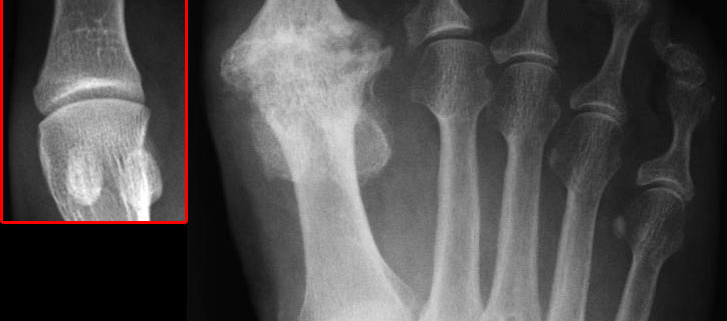
Hallux Rigidus
Overview
Hallux rigidus is a common condition characterized by stiffness and pain in the big toe. This joint arthritis is often compared to having a rusty hinge on a door – untreated, it can become increasingly hard to move. Firmly in the grips of hallux rigidus, everyday walking becomes a challenge. In the United States alone, it is estimated that millions struggle with this condition.
Types
Hallux rigidus can be categorized into two major types:
-
- Functional Hallux Rigidus: Movement is restricted due to structural abnormalities rather than joint problem.
-
- Structural Hallux Rigidus: This type is generally associated with arthritis and occurs due to the degeneration of the joint lining.
Causes
Hallux rigidus often results from structural abnormalities and overuse of the foot. Other factors include:
-
- Previous injury or trauma to the toe.
-
- Family history of the condition.
-
- Age: People over 30 are more likely to develop it.
Symptoms
Symptoms can vary from person to person and often become more severe over time. Common hallux rigidus symptoms include:
-
- Stiffness and limited movement in the big toe.
-
- Persistent toe pain, especially upon walking or during cold weather.
-
- Swelling around the joint area.
Less common symptoms might include:
-
- Bunion-like bump development.
-
- Altered walking patterns to avoid pain.
Diagnosis
To accurately diagnose hallux rigidus, doctors typically perform a physical examination of the foot followed by imaging tests such as X-rays to confirm the diagnosis and assess the condition’s severity.
Treatment Options
Treatment for hallux rigidus can be either conservative or surgical, depending on the severity of the condition.
Common conservative approaches include:
-
- Anti-inflammatory medications to reduce swelling and pain.
-
- Physical therapy to maintain joint flexibility.
-
- Orthotic devices to provide support and reduce stress on the toe.
When conservative treatment isn’t effective, surgical intervention may be required, which can include joint resurfacing, joint fusion, or joint replacement.
Living With Hallux Rigidus
Living with hallux rigidus certainly presents challenges, but with the right strategies, you can manage the condition effectively.
-
- Wear supportive shoes: Shoes with a wide toe box and good arch support can make a significant difference.
-
- Apply heat and cold: Alternating between heat and cold packs can help manage pain and inflammation.
-
- Watch your weight: Maintaining a healthy weight reduces unnecessary stress on your joints.
When to Seek Help
If you’re experiencing persistent pain, swelling, or loss of movement in your big toe, it’s time to seek help from a healthcare professional. Early intervention can prevent further complications and provide effective treatment options.
managing hallux rigidus involves understanding the condition, its symptoms, and potential treatments. With proper guidance from healthcare providers, patients can effectively manage the condition and maintain an active lifestyle.
